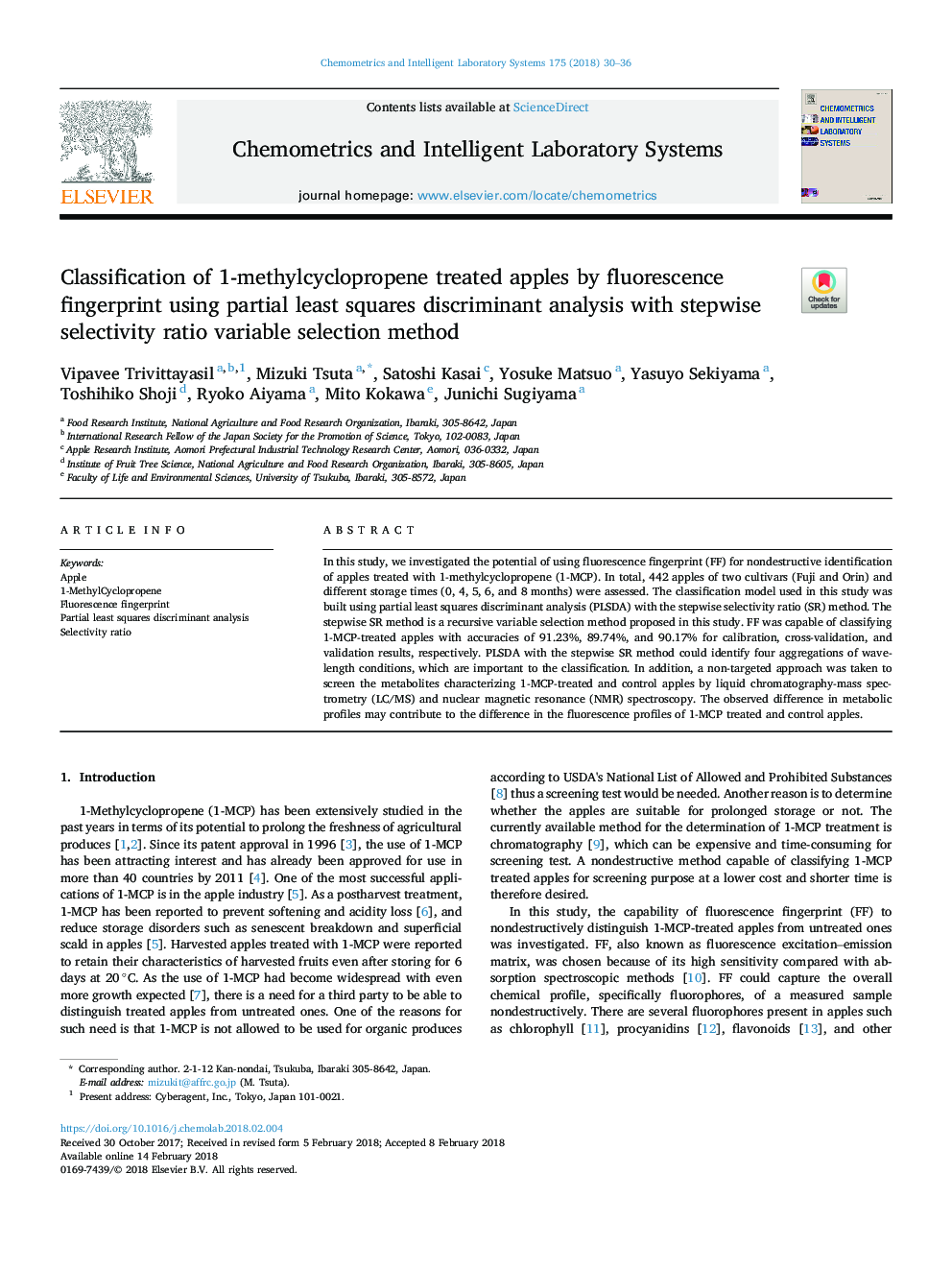| Article ID | Journal | Published Year | Pages | File Type |
|---|---|---|---|---|
| 7562102 | Chemometrics and Intelligent Laboratory Systems | 2018 | 7 Pages |
Abstract
In this study, we investigated the potential of using fluorescence fingerprint (FF) for nondestructive identification of apples treated with 1-methylcyclopropene (1-MCP). In total, 442 apples of two cultivars (Fuji and Orin) and different storage times (0, 4, 5, 6, and 8 months) were assessed. The classification model used in this study was built using partial least squares discriminant analysis (PLSDA) with the stepwise selectivity ratio (SR) method. The stepwise SR method is a recursive variable selection method proposed in this study. FF was capable of classifying 1-MCP-treated apples with accuracies of 91.23%, 89.74%, and 90.17% for calibration, cross-validation, and validation results, respectively. PLSDA with the stepwise SR method could identify four aggregations of wavelength conditions, which are important to the classification. In addition, a non-targeted approach was taken to screen the metabolites characterizing 1-MCP-treated and control apples by liquid chromatography-mass spectrometry (LC/MS) and nuclear magnetic resonance (NMR) spectroscopy. The observed difference in metabolic profiles may contribute to the difference in the fluorescence profiles of 1-MCP treated and control apples.
Related Topics
Physical Sciences and Engineering
Chemistry
Analytical Chemistry
Authors
Vipavee Trivittayasil, Mizuki Tsuta, Satoshi Kasai, Yosuke Matsuo, Yasuyo Sekiyama, Toshihiko Shoji, Ryoko Aiyama, Mito Kokawa, Junichi Sugiyama,
